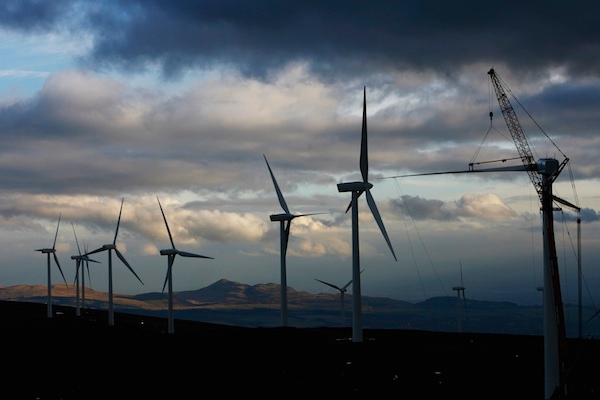The price of offshore wind power has halved, making those giant inshore turbine arrays we love to hate look competitive with new nuclear power for the first time. The headline number in this story is £57.50, which is the guaranteed electricity price per megawatt hour bid by two windfarm ventures in the government’s latest ‘contracts for difference’ subsidy auction. Both due for first delivery in 2022-23, these projects at Hornsea on the East Yorkshire coast and Moray East off the north of Scotland, are between them theoretically capable of powering 2.4 million homes. Just two years ago, windfarms were bidding up to £120 per megawatt hour in comparable auctions; their slashed pricing today can be set alongside the £92.50 fix that underpins the finances of the Hinkley Point C nuclear power station, whose projected cost has now topped £20 billion and whose likely completion date is drifting gently towards 2027 and beyond.
I have long argued for pressing on with Hinkley Point, on the basis that it was the only serious option for securing a substantial slice of future UK electricity demand from one domestic source, in the face of a looming energy gap created by the closure of old nuclear and coal-fired plants. Hinkley’s 3,200 megawatt capacity compares with 2,300 megawatts for the two new giant windfarms together — but as a nuclear industry spokesman was eager to point out, offshore wind ‘only produced electricity for 36 per cent of the time’ last year and has yet to solve the problem of storing excess power generated when winds are high.
Look forward a decade, however. French energy giant EDF, leader of the Hinkley project, may still have problems delivering the ‘European pressurised reactor’ model that has been so troublesome for its own Flamanville plant in Normandy. Wind, solar and tidal power may all look more viable than today, through advances in efficiency and economies of scale; and progress will surely have been made in power storage. We may also see a new crop of mini nuclear reactors, quicker to build and (according to one manufacturer, Rolls-Royce) viable at £60 per megawatt hour. Hinkley Point C was the best idea available when it was first mooted seven years ago, but time and technology are inexorably overtaking it.







Comments